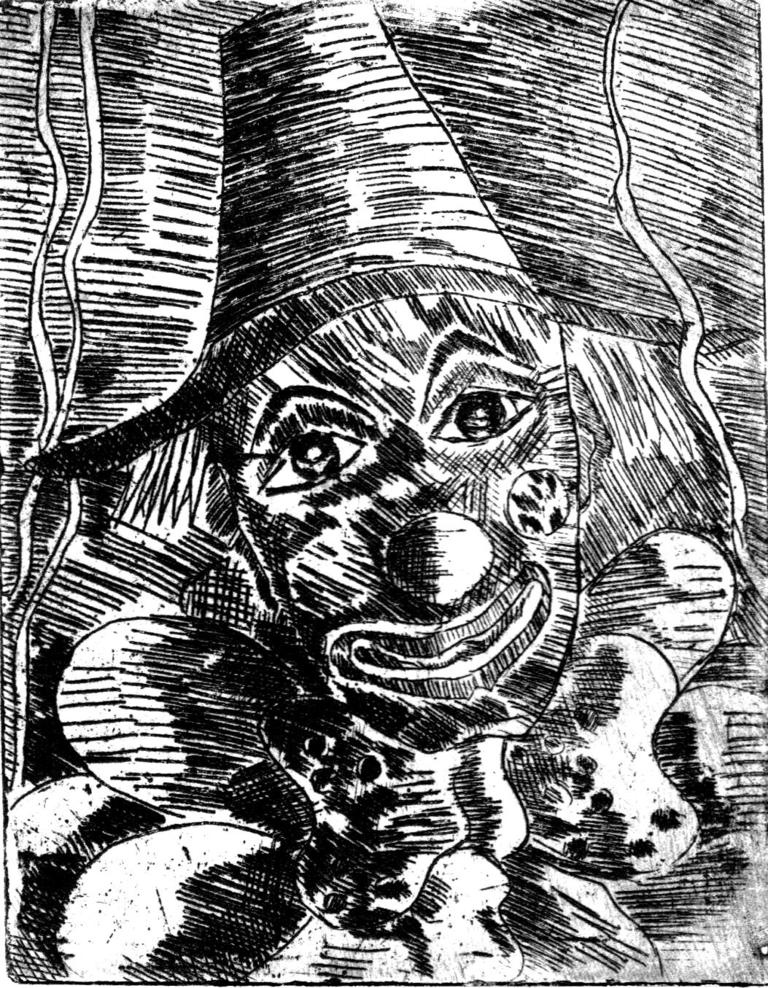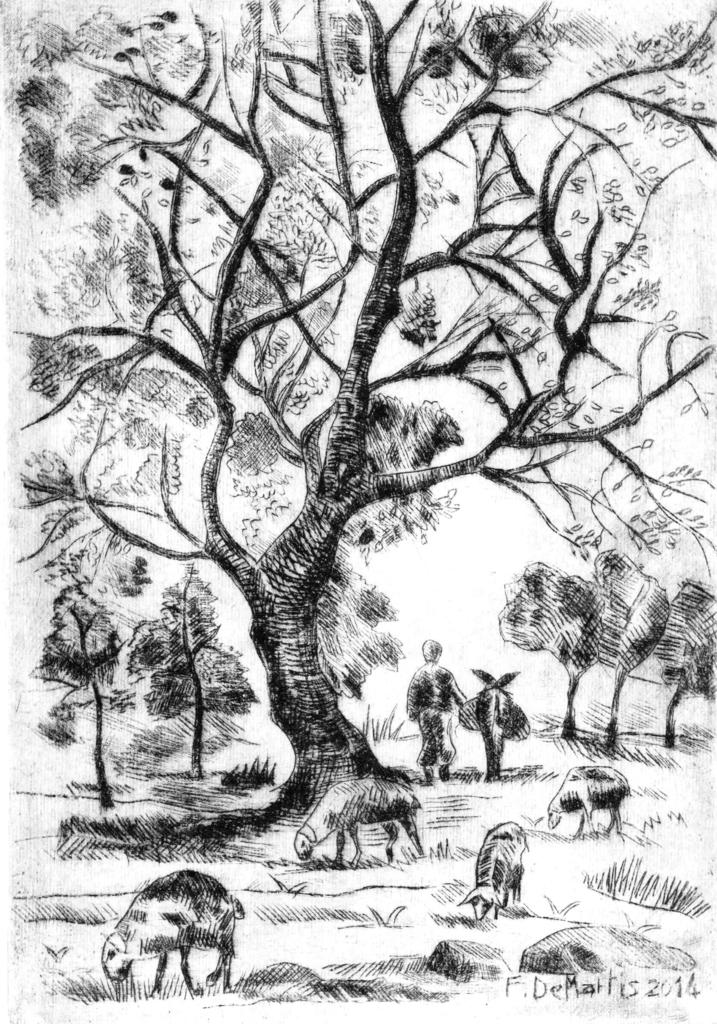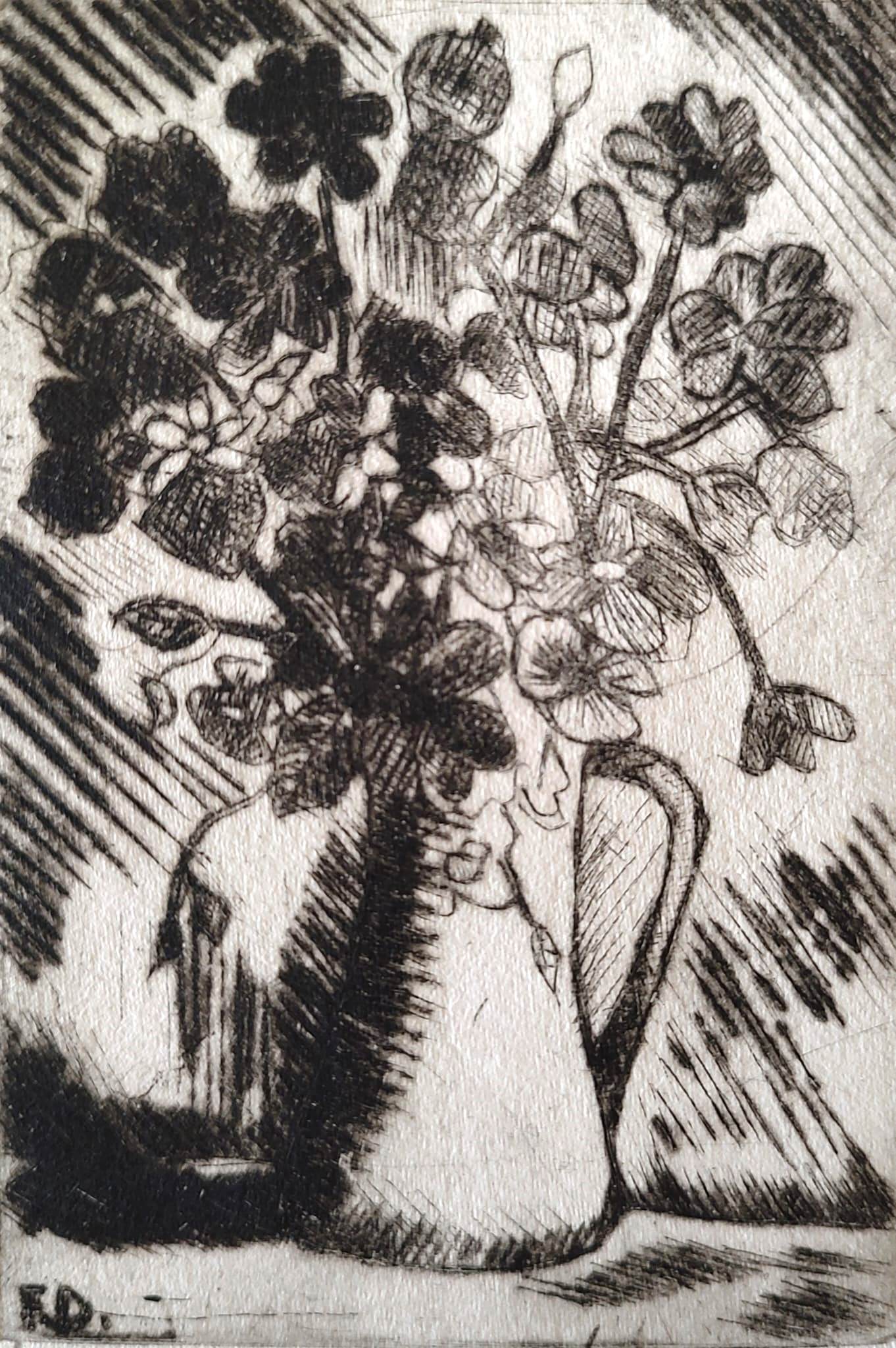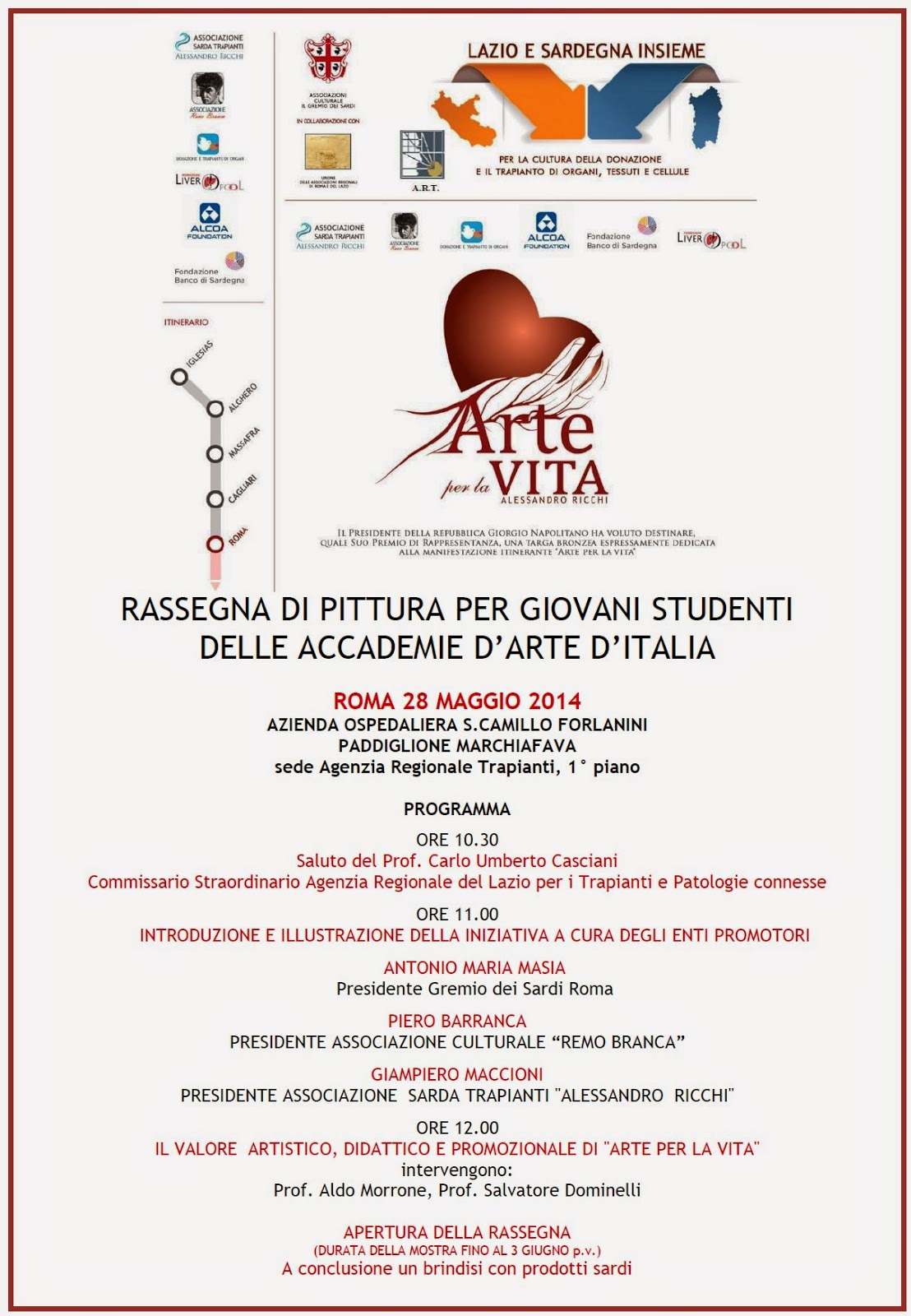Acquafort e: è una stampa “in cavo” ottenuta da una lastra di rame o zinco, ricoperta da uno strato di vernice o di cera sul quale viene eseguito il disegno attraverso una punta che toglie lo strato di vernice.
e: è una stampa “in cavo” ottenuta da una lastra di rame o zinco, ricoperta da uno strato di vernice o di cera sul quale viene eseguito il disegno attraverso una punta che toglie lo strato di vernice.
Successivamente la lastra viene immersa per un certo tempo in una soluzione di acido nitrico che corrode la lastra nelle zone in cui esse sono state scoperte. L'operazione si chiama morsura e durante la morsura si formano delle piccole bolle di gas (idrogeno) che devono essere rimosse con una piuma d'oca per far sì che la morsura risulti regolare. La lastra viene quindi lavata con acqua, ripulita dello strato di vernice e inchiostrata. Il disegno ottenuto viene stampato, mediante la pressione di un torchio tipografico, su carta preventivamente bagnata.
Etching: it is a "cavity" print obtained from a copper or zinc plate, covered with a layer of paint or wax on which the drawing is performed through a point that removes the layer of paint.Subsequently, the plate is immersed for a certain time in a solution of nitric acid which corrodes the plate in the areas where they were discovered. The operation is called etching and during etching, small gas bubbles (hydrogen) are formed which must be removed with a goose down to ensure that the etching is regular. The plate is then washed with water, cleaned of the paint layer and inked. The design obtained is printed, by pressing a printing press, on previously wet paper.
Puntasecca: è anch’essa una stampa “in cavo”. E’ ottenuta da una lastra di metallo incisa da una punta molto dura e sottile. L’inchiostro viene depositato sulla matrice a caldo: esso riempie gli spazi scavati e, dopo la eliminazione dell’inchiostro eccedente depositatosi sulla matrice, il disegno viene stampato mediante la pressione di un torchio.
Drypoint: it is also a "cavity" print. It is obtained from a metal plate engraved with a very hard and thin tip. The ink is deposited on the hot matrix: it fills the hollowed spaces and, after eliminating the excess ink deposited on the surface of the matrix, the design is printed by pressing a press.
Mezzatinta: la mezzatinta, o maniera nera, è una tecnica di stampa che consente di ottenere, da una lastra metallica (zinco, rame, alluminio, ecc.), un’immagine emergente da un fondo nero o molto scuro.
La lavorazione della lastra è detta granitura e si effettua con uno strumento chiamato berceau (o rocker o mezzaluna) il quale crea un reticolo molto fitto di piccoli punti su tutta la superficie del metallo. Il berceau è simile al ferro di un pialletto da falegname, rigato su una faccia con l'estremità a forma di mezzaluna, con denti molto fini e vicini tra di loro. L’altra estremità termina con un manico di legno.
L’utilizzo del rocker o berceau, inventato nel 1672 dall’incisore olandese Abraham Blooteling (1640-1690), consiste in numerosi passaggi dello strumento sulla superficie del metallo in direzioni ortogonali tra loro e deve essere ripetuto molte volte al fine di ottenere una superficie che, stampata, darà un nero profondo.
Ottenuta la superficie granita si inizia il lavoro appiattendo le barbe con il brunitoio e con il raschietto, alleggerendo lo scuro fino a ottenere le tonalità di grigio. Infine per ottenere il massimo bianco si liscia la superficie con le punte d’agata.
La caratteristica di questa tecnica risiede nella realizzazione di un’opera ottenuta non dalle cavità dei segni, come nell’acquaforte e nella puntasecca, ma dal loro appiattimento, che conferiscono il caratteristico aspetto sfumato dei neri in fase di stampa.
Mezzotint: mezzotint, or black manner, is a printing technique that allows you to obtain, from a metal plate (zinc, copper, aluminum, etc.), an image emerging from a black or very dark background.
The processing of the slab is called graining and is carried out with a tool called a berceau (or rocker or crescent) which creates a very dense network of small dots over the entire surface of the metal. The berceau is similar to the iron of a carpenter's plane, lined on one face with the end in the shape of a crescent, with very fine and close teeth. The other end ends with a wooden handle.
The use of the rocker or berceau, invented in 1672 by the Dutch engraver Abraham Blooteling (1640-1690), consists of numerous passages of the tool on the surface of the metal in orthogonal directions to each other and must be repeated many times in order to obtain a surface which, when printed, will give a deep black.
Once the granite surface has been obtained, the work begins by flattening the beards with the burnisher and the scraper, lightening the dark until the shades of gray are obtained. Finally, to get the maximum whiteness, the surface is smoothed with agate tips.
The characteristic of this technique lies in the creation of a work obtained not from the cavities of the signs, as in etching and drypoint, but from their flattening, which give the characteristic shaded appearance of blacks in the printing phase.




 e: è una stampa “in cavo” ottenuta da una lastra di rame o zinco, ricoperta da uno strato di vernice o di cera sul quale viene eseguito il disegno attraverso una punta che toglie lo strato di vernice.
e: è una stampa “in cavo” ottenuta da una lastra di rame o zinco, ricoperta da uno strato di vernice o di cera sul quale viene eseguito il disegno attraverso una punta che toglie lo strato di vernice.

